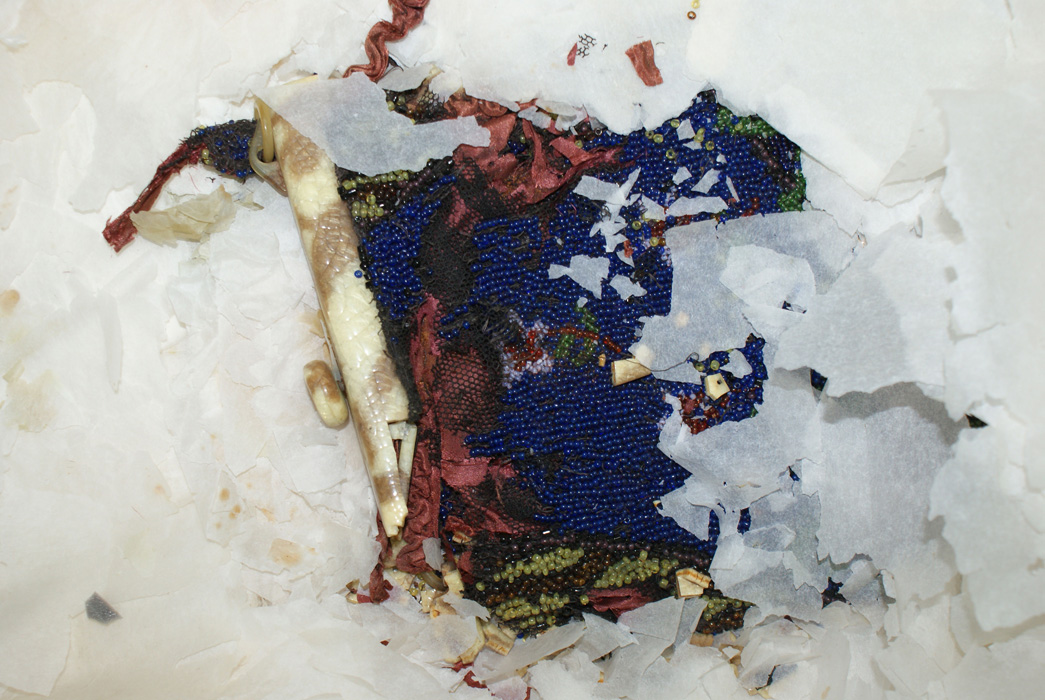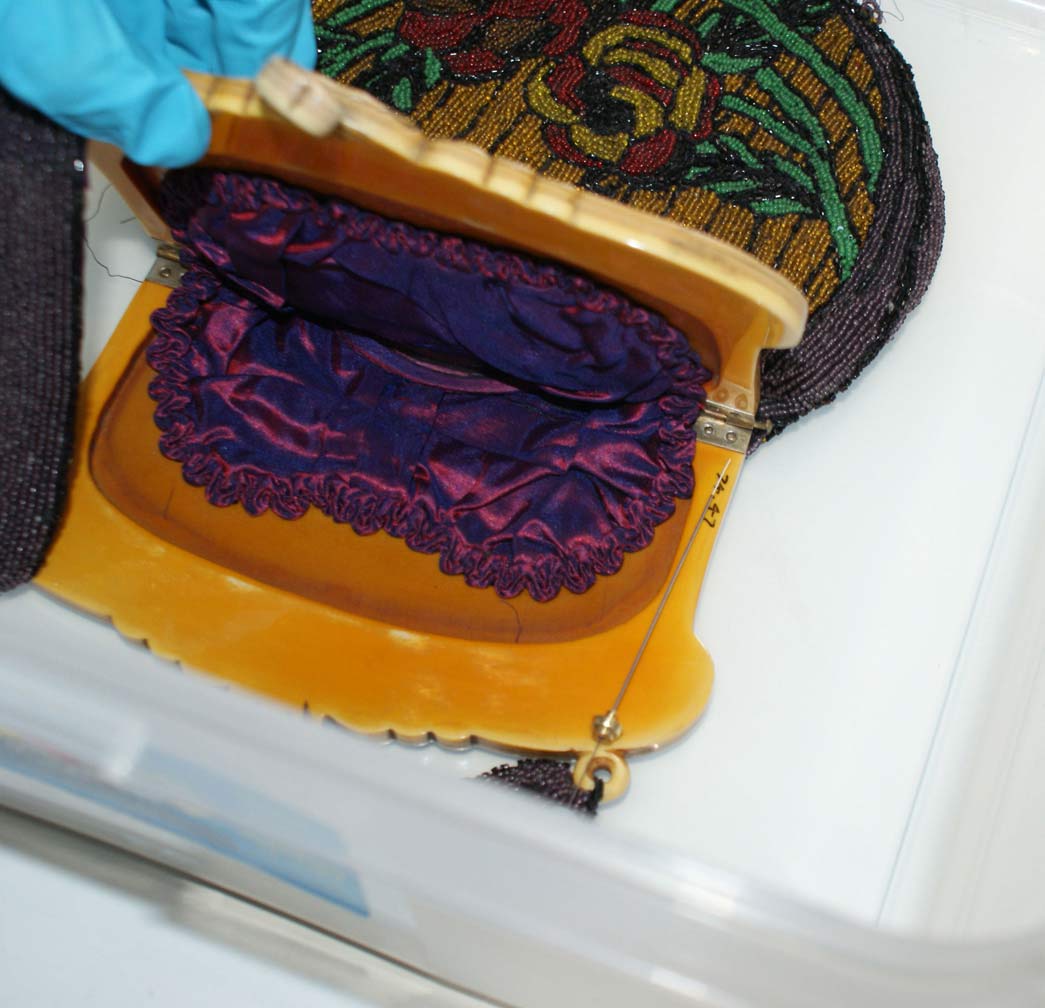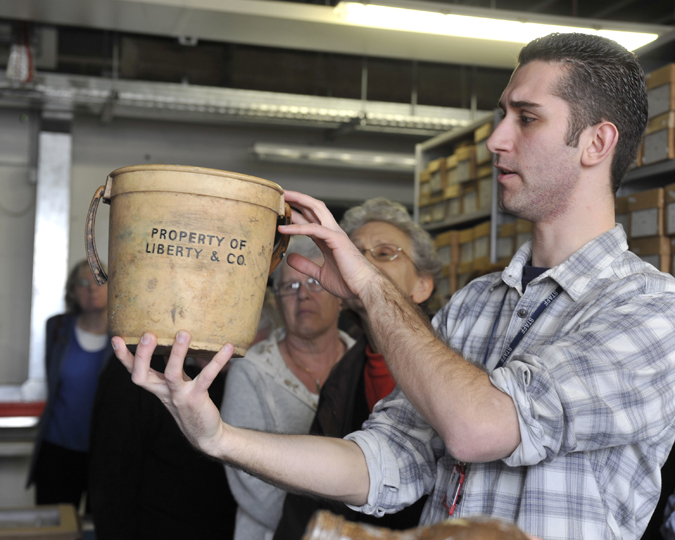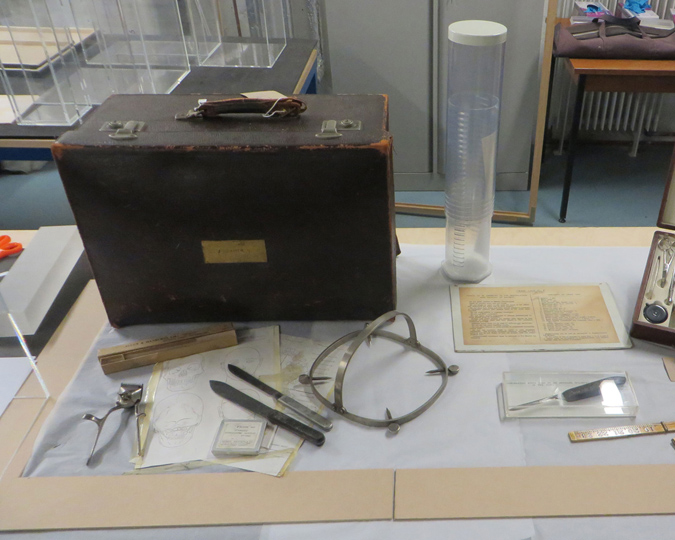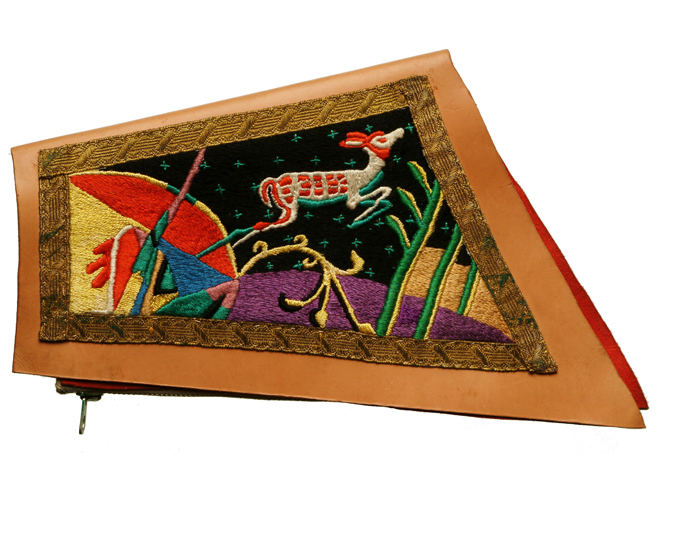Each year worldwide production of plastic exceeds that of steel. It is therefore widely recognised that we are living in the Plastic Age. The museum collection includes plastics dating back over 100 years - which pose a unique conservation challenge.

Plastic handbag designed by Ackery.
Plastics are often seen as a very modern material, and as a result most people are surprised to learn that they have actually been around since the mid-nineteenth century. Some of the earliest formulations were used to imitate more expensive materials such as tortoiseshell, ivory and mother-of-pearl, and were used in the manufacture of a variety of objects from perfume bottles to buttons. Later, plastic became a luxurious and technologically advanced material its own right, used to produce ‘to die for’ designer handbags as well as WWII aircraft canopies.
An explosion of new plastics throughout the 20th Century means that they now form a large, irreplaceable, and often under-appreciated part of our everyday lives- our Oyster cards, our non-stick frying pans, even our false teeth!
Problems with plastics
It is a common misconception that plastics last forever. In fact, plastics are one of the most unstable and therefore most problematic materials found in museum collections. It is the earliest experimental formulations that are currently known to be the most unstable- materials such as cellulose nitrate and cellulose acetate. These plastics undergo a series of chemical degradation reactions that can lead to catastrophic physical breakdown of the material. These plastics also emit acids that can cause degradation to other materials such as textiles, paper and metals.
The need for accurate identification
There are several options for slowing the degradation of unstable plastic formulations: adding gaseous absorbents such as activated carbon to storage enclosures to remove emitted acids, or creating low oxygen storage environments.
However, in order to decide on the best storage enclosure for a plastic object, it is essential to accurately identify the plastic material first. This is because different plastics have different storage requirements, so putting a plastic object in the wrong environment can in some cases actually accelerate degradation.
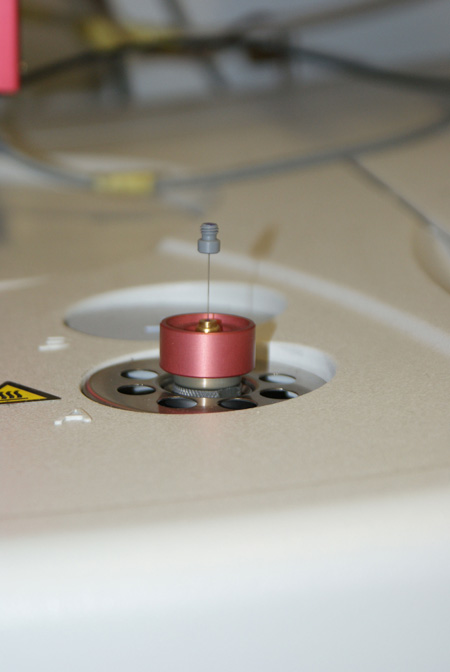
SPME fibre inserted into the GCMS
Testing a new identification technique
The problem is, identifying plastic materials visually is really tricky and often unreliable. Fortunately, a range of scientific identification techniques are available to identify plastics much more accurately. However, often these types of analysis require a high level of specialist knowledge to interpret the results, and it is unusual for a museum conservation lab to have ready access to high tech equipment. Most problematically, sometimes these techniques require a sample to be taken from the plastic object- sampling museum objects is of course something we avoid doing as far as possible.
To solve these problems scientists are currently working on new techniques that can be used to accurately identify plastic materials but are also suitable for use on museum objects. The Museum of London recently teamed up with a scientist from UCL’s Institute for Sustainable Heritage to test an emerging plastic identification technique called Solid Phase Microextraction Gas Chromatography Mass Spectrometry (SPME-GC/MS).
There are lots of great things about this technique, but the best features (particularly for museum objects) are that it is entirely contactless and it gives you a really accurate, very detailed plastic identification.
The technique uses coated fibres known as SPME fibres that are specially adapted to pick up the emissions or smells of objects. A SPME fibre can simply be placed in the vicinity of a plastic object and left for around a week to pick up the smells coming from the plastic.
After collecting all of these emissions, the fibre is inserted into a specialised instrument called a GC/MS. The GC/MS strips the emissions from the fibre and separates them out so that you can see what you have picked up. Based on these smells, in most cases you can come to a sound conclusion as to exactly what plastic material the object is made of.
We applied this technique to a group of plastic handbags from the Museum of London’s costume collection and were able to identify cellulose acetate, casein formaldehyde, PVC and polyurethane. Using these results we improved the storage of these handbags to slow future degradation.
We also had some surprising results: one emission suggested that one of the handbags was likely to have been stored in a wardrobe with mothballs during its working life, and another suggested that one handbag may have been used to carry pear or banana flavoured confectionery or cosmetics!
The downside to this technique is that is does require a high level of specialist knowledge to understand the results, as well as some advanced, very expensive pieces of equipment to carry out the analysis. It’s also fairly labour intensive so would be difficult to apply to every plastic object in a museum collection. However, scientists, including those at University College London (UCL), are continuing to work on identifying plastics via their smells, so are coming ever closer to a technique perfect for use in museums.
Love fashion? Subscribe to our fashion newsletter to read more stories from our collections and find out about upcoming events and exhibitions.








